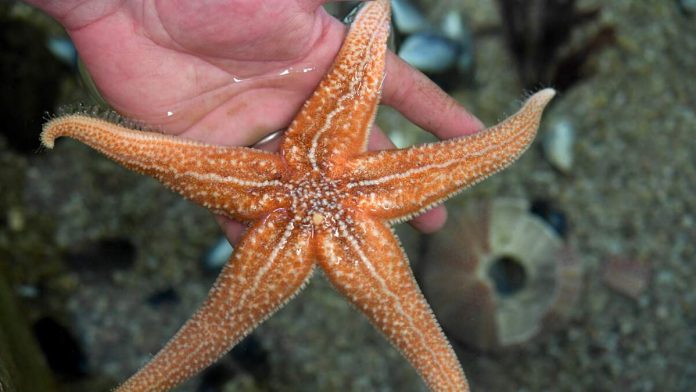Scientists have discovered the cause of a devastating disease affecting sea stars along the California coast. The disease, known as sea star wasting disease, has been turning these marine creatures into goo since 2013. After years of research, scientists have identified the culprit as a bacteria called Vibrio pectenicida.
The discovery was made by a team of researchers led by Alyssa-Lois Gehman from the Hakai Institute in British Columbia. Over four years, they conducted experiments to pinpoint the cause of the disease. According to The New York Times, the team collected sea stars from the field, quarantined them, and used coelomic fluid, the blood of sea stars, to trace the infection. This approach led to the breakthrough identification of Vibrio pectenicida as the pathogen.
The impact of the disease has been severe, with sunflower sea stars losing 90 percent of their population over the last decade. This decline has disrupted the ecosystem, allowing sea urchins to overrun and destroy kelp forests, which are vital marine habitats.
The identification of the bacteria opens new avenues for recovery efforts. Scientists are now exploring ways to restore sea star populations, including breeding programs and the use of probiotics to help sea stars combat the bacteria. The Nature Conservancy is leading a recovery program for sunflower sea stars, aiming to return them to their native habitats.
Despite the breakthrough, many questions remain. Researchers are still investigating how the bacterium spreads, whether it is native to North America, and if it accumulates in the sea stars’ food. Understanding these factors will be crucial in preventing future outbreaks and aiding recovery efforts.

Recent Comments